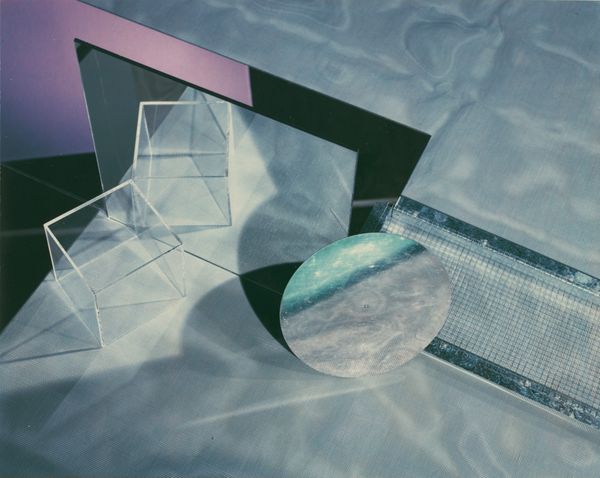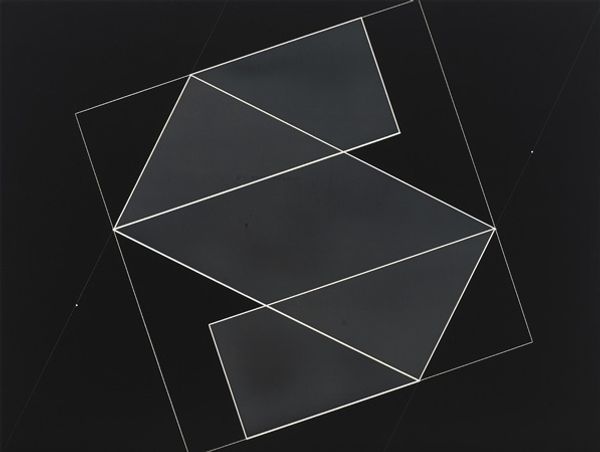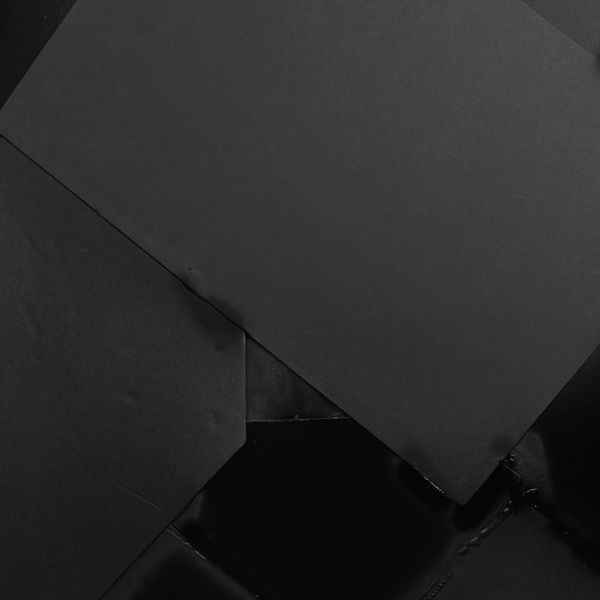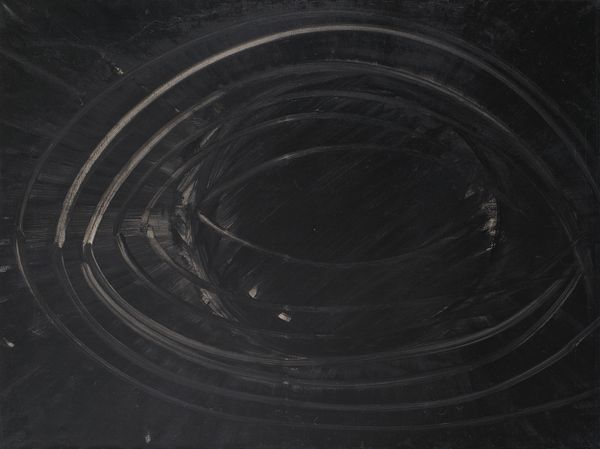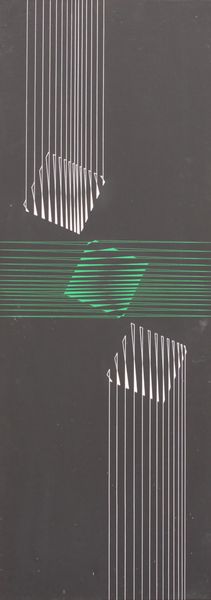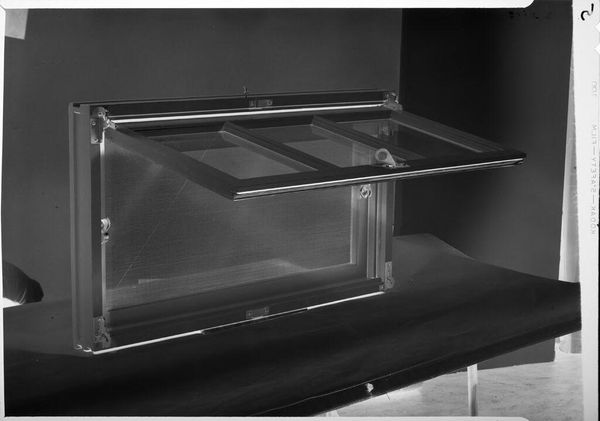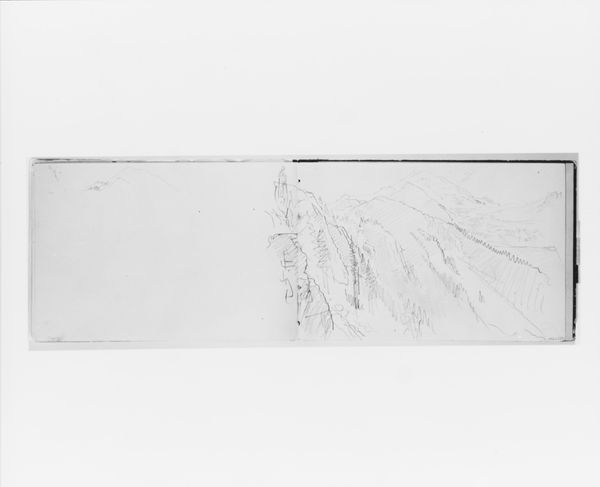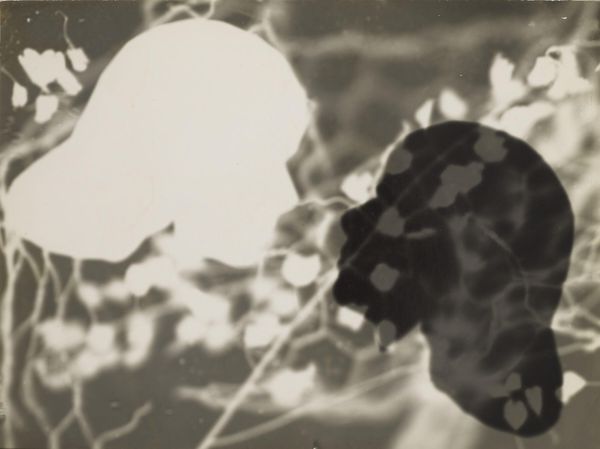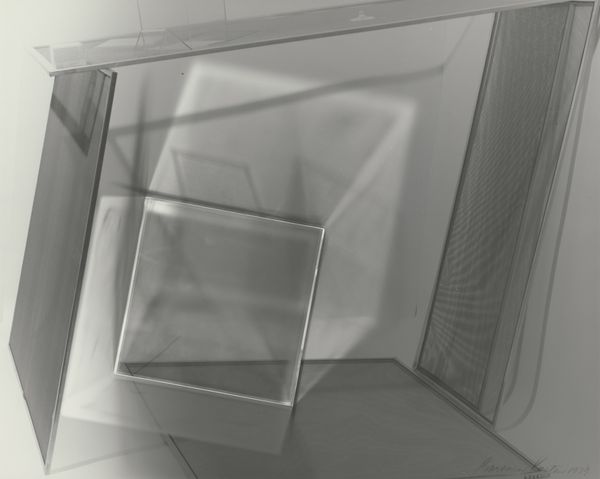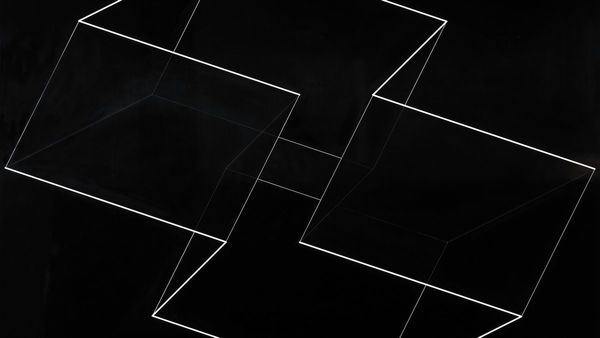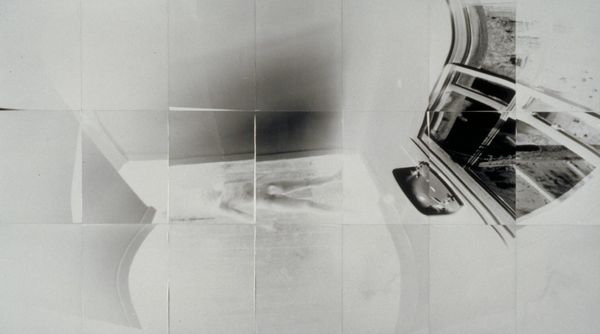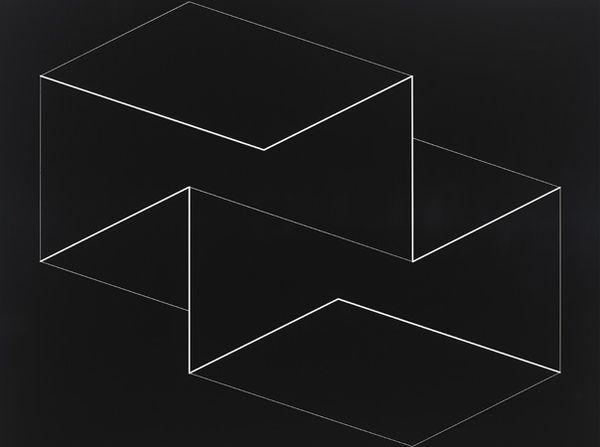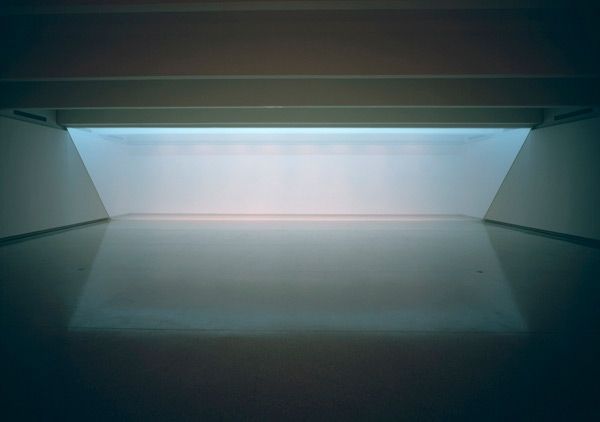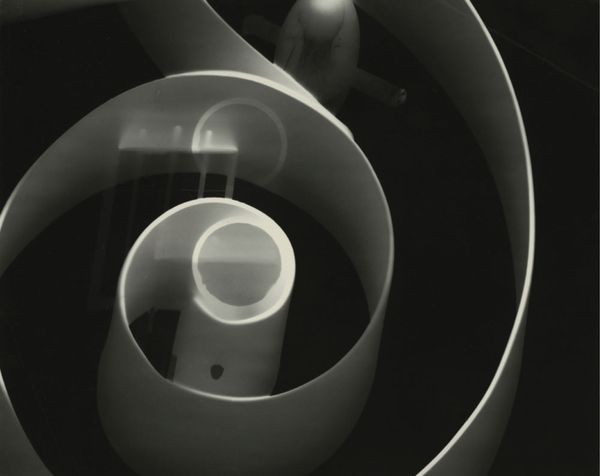
photography
#
still-life
#
photography
#
3d shape
#
geometric
#
geometric-abstraction
#
abstraction
#
modernism
Dimensions: image/sheet: 50.8 × 40.64 cm (20 × 16 in.)
Copyright: National Gallery of Art: CC0 1.0
Editor: Here we have Barbara Kasten's "Untitled" from 1979, a photographic work playing with geometric abstraction. The grayscale and sharp angles create this intriguing, almost cold atmosphere. How do you read into Kasten’s photographic abstraction? Curator: This work makes me think about power dynamics inherent within structures, both architectural and social. Kasten, working in the late '70s, was engaging with a moment when postmodernism was questioning the established order. Does this photo subtly challenge the supposedly neutral, objective gaze often associated with modernist architecture and photography? Editor: That's a thought-provoking way to see it! The hard edges of the geometric shapes certainly evoke modernist architecture. It also brings to mind how gender and power have been traditionally coded. Were women associated with the private or domestic spaces, distinct from the public spaces represented by the corporate modern architecture? Curator: Precisely. Consider also the materiality - Kasten doesn’t hide the artificiality; we see reflections, the setup itself. She acknowledges her own mediation, countering any claim of objectivity. I would encourage anyone looking at the artwork to ask: does she echo the feminist strategies that emerged in the 70’s: consciously dismantling patriarchal systems? Editor: I had not even considered that context but it really brings depth and dimension into what appears on the surface to be formal still life composition. Curator: Exactly, and by considering social conditions you have gained a deeper insight. It really illuminates how visual languages function within specific cultural settings. Editor: Absolutely! Considering Kasten's photo beyond just formal elements is definitely a powerful lens. Curator: And that is how we can look at visual languages of the past and decode their social and political implications in contemporary spaces.
Comments
No comments
Be the first to comment and join the conversation on the ultimate creative platform.
